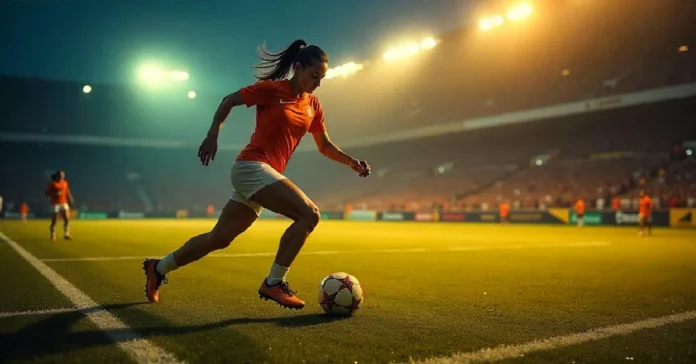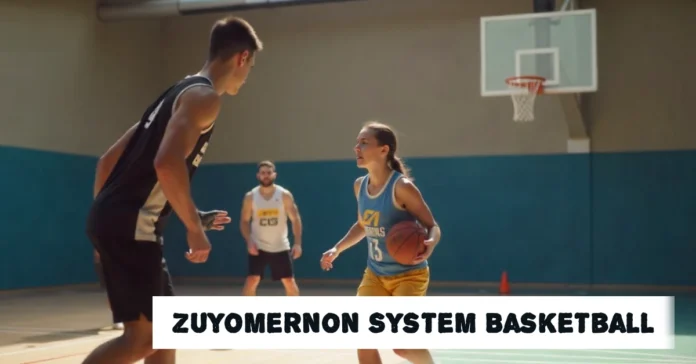Fake sports Harmonicode often spreads faster than verified research because it taps into the emotional appeal of innovation. The so-called “Sports technology” claims to revolutionize athletic performance through harmonic frequency analysis—yet no peer-reviewed studies, patents, or verifiable prototypes support its existence.
This case study exposes how marketing phantoms mimic breakthrough innovation—and shows you how to recognize the linguistic, technical, and credibility red flags before wasting valuable time or money.
The Sports Harmonicode Claims
Sports Harmonicode presents itself as next-generation training tech that supposedly decodes “harmonic frequencies” in human movement. Promotional copy lists benefits like injury prevention, AI-based performance optimization, and personalized training protocols—phrases that mirror legitimate sports tech language without offering any data transparency.
The technology supposedly combines biomechanical feedback with artificial intelligence to deliver real-time coaching insights. Multiple websites claim it reduces injury rates by 20% and improves power output by 12%. These numbers sound impressive—but without published methodology, sample size, or source verification, they’re scientifically meaningless.
Red Flag #1: No Peer-Reviewed Research
Legitimate sports technology earns credibility through peer-reviewed research in journals such as Sports Medicine, Journal of Sports Sciences, or Medicine & Science in Sports & Exercise, where findings are scrutinized through blind review and reproducibility testing. Real innovations undergo rigorous testing before making performance claims.
Sports Harmonicode cites zero peer-reviewed studies. Search results show only blog posts and promotional articles—never academic research. When technology promises measurable improvements, demand to see the data. No studies equal no credibility.
Red Flag #2: Vague Technical Explanations
Authentic sports tech explains exactly how it works. Force plates measure ground reaction forces. Motion capture systems track joint angles through calibrated cameras. Heart rate variability monitors detect autonomic nervous system responses.
Sports Harmonicode leans on pseudo-scientific jargon—“harmonic resonance,” “frequency optimization”—without describing its data capture method, signal processing algorithm, or biomechanical validation path. Real technology describes specific sensors, algorithms, and measurement protocols. Vague explanations hide the absence of actual innovation.
Red Flag #3: Missing Industry Presence
Proven sports technologies appear at conferences, trade shows, and research presentations. Companies like DARI Motion Capture and Sparta Science demonstrate their systems publicly and partner with universities for validation studies.
Sports Harmonicode has no footprint in credible sports science venues—no conference abstracts, no equipment patents, no demo sessions at trade expos like CES SportsTech or MIT Sloan Sports Analytics Conference. No equipment manufacturers produce Harmonicode devices. No patents exist for harmonic frequency training systems. Legitimate technology leaves paper trails—fake concepts don’t.
Red Flag #4: Unrealistic Performance Claims
Real performance improvements come gradually through validated training methods. Elite athletes gain small percentage improvements through years of optimization. Technologies that promise dramatic results without extensive testing should trigger skepticism.
Sports Harmonicode claims 12% power improvements and 20% injury reduction without showing how these numbers were measured or what baseline comparisons were used. Extraordinary claims—like 20% injury reduction or double-digit performance gains—require published trials, control groups, and independent replication. None exists.
Red Flag #5: Content Marketing Ecosystem
Dozens of websites repeat near-identical phrasing and metrics when describing Sports Harmonicode—a pattern typical of AI-generated content farms or coordinated SEO campaigns rather than genuine journalism. This suggests coordinated content marketing rather than independent reporting on genuine innovation.
Legitimate technologies generate diverse coverage from different perspectives. Universities publish research findings. Equipment reviews appear in trade publications. Athletes and coaches share firsthand experiences. Marketing phantoms only produce promotional content.
How Real Sports Technology Gains Credibility

Authentic innovations follow predictable validation paths. Researchers publish preliminary studies showing proof of concept. Companies file patents and develop prototypes. Beta testing occurs with university partners or professional teams.
Evidence-driven companies like Catapult Sports and Hawkin Dynamics gained credibility through multi-year validation studies, athlete trials, and partnerships with academic institutions—illustrating the transparency path every real innovation follows. Their GPS tracking systems underwent extensive validation before gaining widespread adoption. Real technology earns trust through transparent development processes.
Protecting Yourself from Sports Tech Scams
Before adopting any new sports technology—whether marketed as AI-driven, biometric, or frequency-based—apply evidence verification steps designed to filter science from sales. First, search academic databases for peer-reviewed research supporting the claims. Google Scholar and PubMed reveal whether legitimate scientists study the technology.
Second, check patent databases to see if actual intellectual property exists. The USPTO and European Patent Office maintain public records of filed patents. Real innovations protect their technology through patent applications.
Third, look for industry partnerships with established organizations. Universities, professional teams, and equipment manufacturers partner with legitimate technology companies. Missing partnerships suggest missing credibility.
The Cost of Fake Technology
Phantom technologies cost more than money—they waste training cycles, distort athlete biomechanics, and erode trust between coaches, scientists, and technology providers. Coaches implement unproven protocols that might harm performance. Injury risk management suffers when teams rely on non-existent technology.
The sports tech industry benefits when consumers demand evidence-based solutions. Supporting legitimate innovations drives real progress while starving marketing phantoms of attention and resources.
Proven Sports Technologies
While Sports Harmonicode lacks evidence, numerous validated technologies deliver measurable benefits. Wearable sensors like heart rate monitors and GPS trackers provide objective training data backed by extensive research.
Force plates precisely measure ground-reaction forces and are validated through controlled lab calibration—unlike speculative systems that claim “frequency harmonization” without any known testing standard.. Motion capture systems track biomechanics with millimeter accuracy. These technologies publish research, demonstrate effectiveness, and undergo continuous refinement based on user feedback.
Recovery technologies like compression therapy and cold water immersion show proven physiological benefits. Sleep monitoring devices help optimize rest and adaptation. Data-driven training works when built on legitimate measurement tools.
Conclusion
The sports technology industry needs higher standards for marketing claims. Athletes and coaches should demand peer-reviewed evidence before adopting new training methods. Educational institutions should teach critical evaluation skills alongside sports science principles.
Consumer skepticism, guided by evidence-based evaluation, protects athletes, teams, and the broader sports ecosystem from financial waste and pseudoscientific harm—ensuring innovation serves performance, not propaganda. When we collectively reject phantom technologies, legitimate innovations receive the attention and investment they deserve. Your skepticism helps build a better sports tech ecosystem for everyone.




